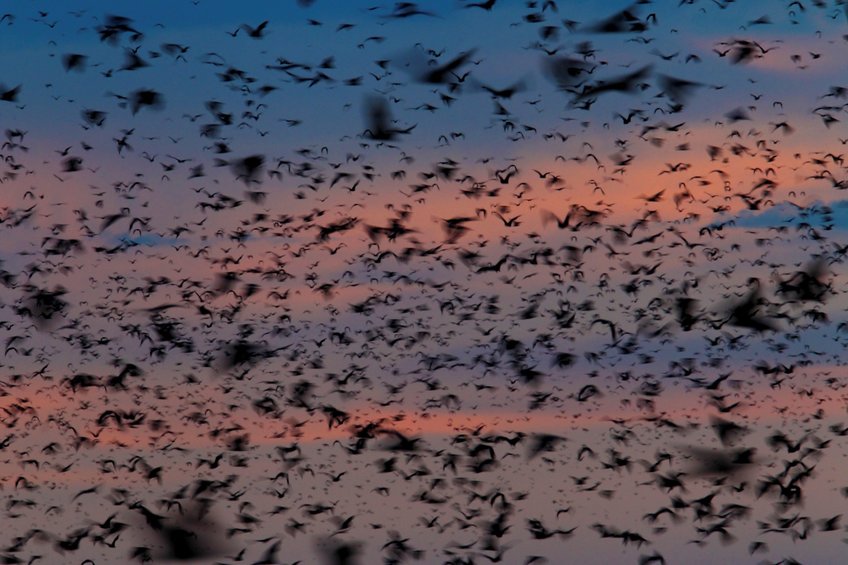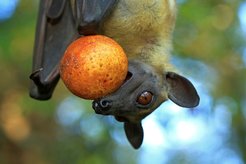
The odd case of Eidolon - a long-distance migrating flying fox

Eidolon helvum is a keystone species in Africa, dispersing seeds and generating forests across the continent and may have numerically the largest mammalian migration worldwide. (photograph by C. Ziegler).
Animal migrations are increasingly threatened as a result of global change and the recent wave of technical developments of tracking methodology has given this field of research a much-needed boost.
Wandering species often cover large distances, frequently crossing country borders. This means they depend on a multitude of ecosystems and suitable stopover sites - making them particularly vulnerable (see also Convention for the Conservation of Migratory Species). Bats and especially flying foxes are moving into the focus of attention for two very different reasons in this context: 1) because their habitats overlap with those of us humans and thus, they have a particularly strong transmission and dispersal potential for human-relevant diseases. 2) migrating flying foxes are crucial ecosystem service providers as pollinators and seed dispersers, overshadowing any other animal group.
With the launch of the new tracking initiative ICARUS, developed by the Max Planck Institute of Animal Behavior and technology partners, we can finally take a large step towards filling in the blanks regarding the migratory behaviour of the Straw-coloured fruit bat, Eidolon helvum (the most extreme long-distance migrant of all flying foxes). With this knowledge we will better understand the evolution and drivers of migratory behaviour (why is this behaviour so unique among bats) and how this behavior might be socially facilitated. We are investigating this in a project funded by the Cluster for the Advanced Study of Collective Behaviour with postdoc Edward Hurme. We will also gather crucial knowledge about how human-induced change on the landscapes impacts the flying foxes (threats facing a vulnerable migrating species) as well as the effect the flying foxes have on the landscape (ecosystem services). In order to properly weigh all these aspect against each other and put them in context with the migratory behaviour we need detailed colony counts and movement data from a large number of individuals over at least one year (covering one full migration cycle). Before ICARUS, we were only able to collect high-resolution data of nocturnal foraging movements, but were limited in tracking migratory movements. The results of this research not only have the potential to truly change and expand our understanding of animal migrations, but also to provide essential fundamental knowledge for understanding and combating global zoonotic disease.
Keep your eyes peeled for updates, especially when real-time data from flying foxes crossing the African continent will start flowing in and will be fed straight onto movebank.
